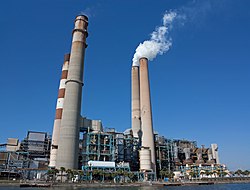 In 2010, the documentary film "Gasland" exploded onto the public consciousness, exposing many people to the next wave of energy extraction: fracking. The practice was taking place across swaths of the United States overlying shale rock formations, as companies had found a new way to access the natural gas and oil below, blasting millions of gallons of water and hundreds of gallons of chemicals to break up the rock and allow the fuels to reach the surface.
In 2010, the documentary film "Gasland" exploded onto the public consciousness, exposing many people to the next wave of energy extraction: fracking. The practice was taking place across swaths of the United States overlying shale rock formations, as companies had found a new way to access the natural gas and oil below, blasting millions of gallons of water and hundreds of gallons of chemicals to break up the rock and allow the fuels to reach the surface.
The industry assured property owners and city governments that the practice was controllable and safe. Yet "Gasland" showed many communities transformed into industrial zones, their water leaching explosive methane.

 Environmental Glance
Environmental Glance North Carolina Governor Beverly Perdue on Sunday vetoed legislation that would have lifted a ban on hydraulic fracturing, or fracking, and opened the door to shale gas exploration in that state.
North Carolina Governor Beverly Perdue on Sunday vetoed legislation that would have lifted a ban on hydraulic fracturing, or fracking, and opened the door to shale gas exploration in that state. Loved ones aren't the only thing buried in the 122-year-old Lowellville Cemetery in eastern Ohio. Deep underground, locked in ancient shale formations, are lucrative quantities of natural gas.
Loved ones aren't the only thing buried in the 122-year-old Lowellville Cemetery in eastern Ohio. Deep underground, locked in ancient shale formations, are lucrative quantities of natural gas. Documents obtained by the Environmental Working Group (EWG) show that bureaucrats within the New York Department of Environmental Conservation (NY DEC) granted the oil and gas industry premature access to highly controversial draft regulations for shale gas fracking in the state.
Documents obtained by the Environmental Working Group (EWG) show that bureaucrats within the New York Department of Environmental Conservation (NY DEC) granted the oil and gas industry premature access to highly controversial draft regulations for shale gas fracking in the state. Los Angeles officials have voted unanimously to approve stricter enforcement of the federal Clean Air Act, including a provision that requires coal-fired plants to reduce mercury and other toxic air pollution.
Los Angeles officials have voted unanimously to approve stricter enforcement of the federal Clean Air Act, including a provision that requires coal-fired plants to reduce mercury and other toxic air pollution. Methane seeping up underground pathways caused concentrated plumes of gas in the air in Bradford County where the state and a natural gas drilling company are investigating the cause of stray methane bubbling in streams and water wells, according to a study released Tuesday by the Clean Air Council.
Methane seeping up underground pathways caused concentrated plumes of gas in the air in Bradford County where the state and a natural gas drilling company are investigating the cause of stray methane bubbling in streams and water wells, according to a study released Tuesday by the Clean Air Council. As the world warms and seas rise, some spots are expected to take the brunt of the higher ocean levels, while others may not see such a deluge, new research by the U.S. Geological Survey (USGS) reveals.
As the world warms and seas rise, some spots are expected to take the brunt of the higher ocean levels, while others may not see such a deluge, new research by the U.S. Geological Survey (USGS) reveals.






























